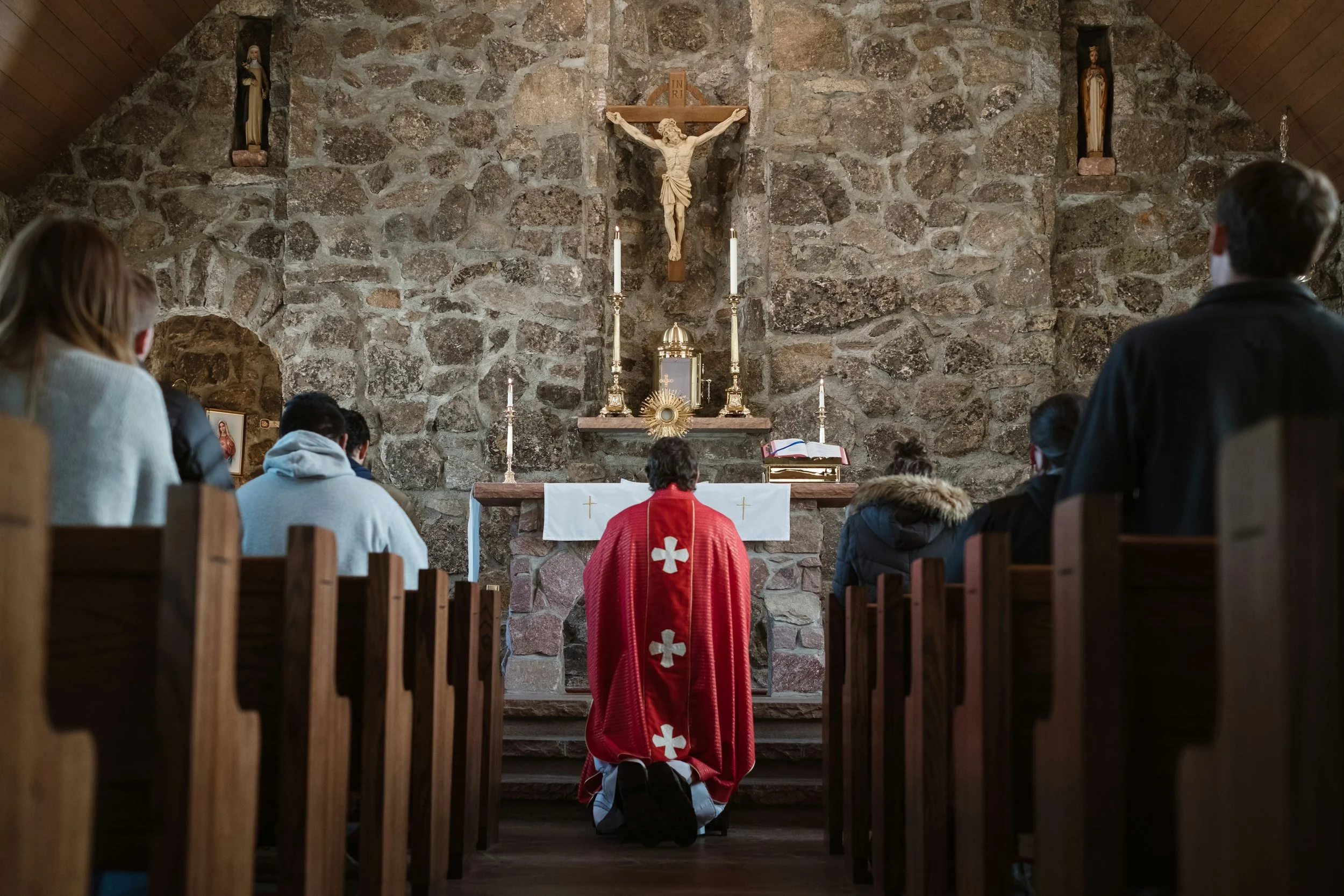The Universal Church, Then and Now
From the Upper Room to Vacaville: A First-Century Church in 2025
This morning, I went to Mass at St. Joseph Catholic Church in Vacaville. It was a Thursday, midweek, not a holy day or special feast—and yet the chapel was almost full. I don’t mean “technically full” like “a few rows scattered with people.” I mean full—babies in arms, elders with canes, teenagers kneeling, men and women from every walk of life fully engaged in worship.
The call-and-response rhythm of the Mass was seamless. You could feel it—everyone was participating. Not just present, but invested. The prayers weren’t rushed or robotic. They were real. Reverent. Joyful. Confident. The way it should be when the Bride of Christ speaks to her Bridegroom.
As I looked around, I saw the true ecclesia—the gathered Body of Christ, in all its diversity:
A Mexican priest reverently elevating the Host.
A Filipino lector proclaiming the Word with conviction.
A communion minister who may have been Vietnamese, hands steady and eyes clear.
Black families, white families, older couples, young singles, infants asleep in carriers.
This was the Church.
Not a cultural event.
Not a theological seminar.
Not a spectator show.
A living, breathing assembly of believers, united under the name of Jesus, receiving His Body and Blood, and leaving transformed.
And as I walked out—joyfully, along with everyone else—I saw the priest standing near the door, smiling, blessing, greeting people by name. And I couldn’t help but think…
This is it.
This is what the early Church looked like.
And this is what the modern Church—when she’s walking in grace—still is.
The Catholic Church Is Global Because the Gospel Is Global
When people say the first-century Church didn’t have vestments, rituals, or a liturgical structure, I want to ask:
Do you think the apostles were winging it every Sunday?
Do you really think the Holy Spirit’s order and reverence have an expiration date?
Let’s not forget: the early Christians were Jewish. Temple worship was formal. Structured. Sacred. They didn’t abandon that when they met Jesus—they fulfilled it. And they passed it on.
The early Church had bishops.
They had prayers.
They had sacred meals.
They had tradition.
And they had a mission: Go into all the world and make disciples.
So they did.
And now? Two thousand years later?
They’re still doing it.
The Catholic Church is the most multicultural organization in the history of the world. She has literally gone into every nation—often at great cost—to baptize, teach, feed, heal, and disciple. The same gospel preached in Antioch is being preached in Argentina, the Philippines, Nigeria, and right here in Northern California.
If you ever wonder what the word "Catholic" really means—just walk into a vibrant parish on a weekday morning and look around.
Global Traditions, One Faith
One of the things I’ve come to love most about the Catholic Church is the way it honors cultural expressions within a unified faith.
Filipinos raise the priest’s hand to their foreheads in reverence.
Africans sing the Gloria with drums and dancing.
Latin Americans process through the streets with Our Lady of Guadalupe.
Eastern Catholics chant the Divine Liturgy in languages older than the Western alphabet.
And yet—the Mass is the Mass is the Mass.
No matter where you are in the world, the consecration sounds the same.
The Body and Blood are still the Body and Blood.
The Creed is still the Creed.
The Spirit is still the Spirit.
And Jesus is still present—body, blood, soul, and divinity.
Personal Pastoral Care: It Still Exists
Here’s another myth I’ve seen busted firsthand: the idea that Catholic priests are distant or unavailable.
At St. Joseph’s—and in many thriving parishes—the priests aren’t just sacramental functionaries. They’re shepherds. Real pastors.
They hear confessions.
They pray over the sick.
They greet people after Mass.
They know your name.
Having two priests in a parish isn’t just convenient—it’s life-giving. It means there’s someone to anoint your grandma, bless your new house, baptize your baby, and hear your son’s first confession. That’s personal. That’s powerful.
And in today’s world, where people are aching for connection, it’s more needed than ever.
From First Century to 2025—and Back Again
People like to romanticize the early Church.
But the truth is: we don’t have to go back to live it.
We just have to recognize it.
Because I’m telling you, what I experienced today—on a regular Thursday morning—was the early Church.
The Body of Christ, gathered.
The Word of God, proclaimed.
The Eucharist, received.
The people, sent out.
And maybe that’s the real miracle of Catholicis
Hungry for more?
If you’d like to continue the conversation and grow in fellowship with other believers, come join us in the Facebook group! It’s a space for encouragement, honest discussion, and diving deeper into the topics we explore here. We’d love to have you!



